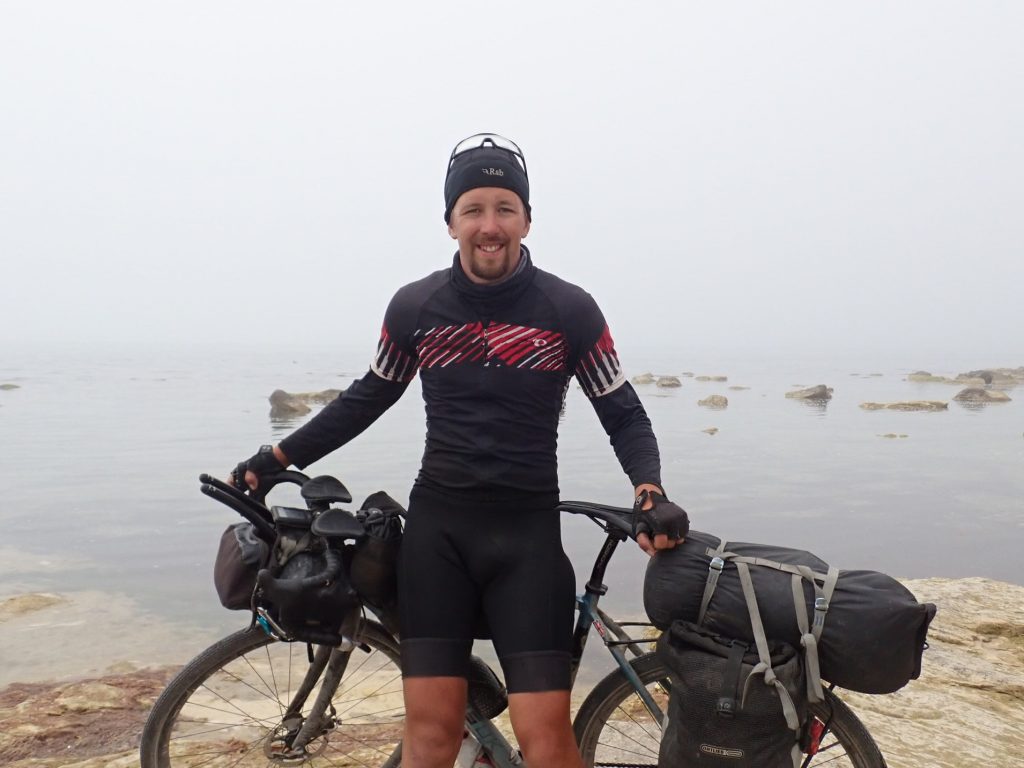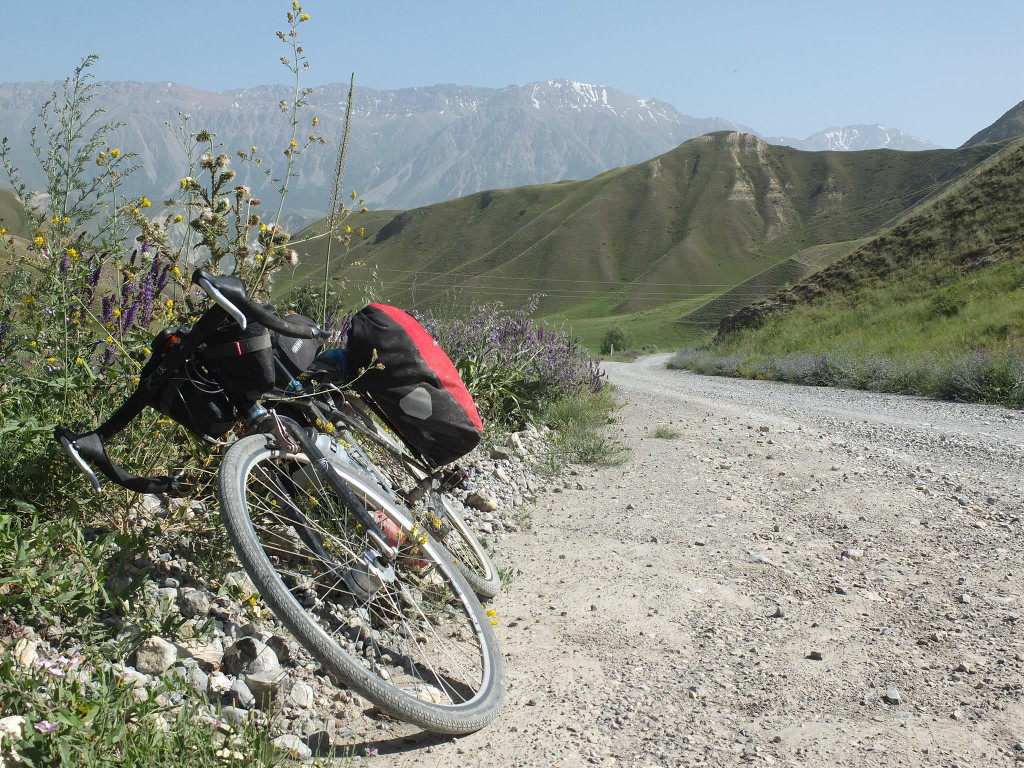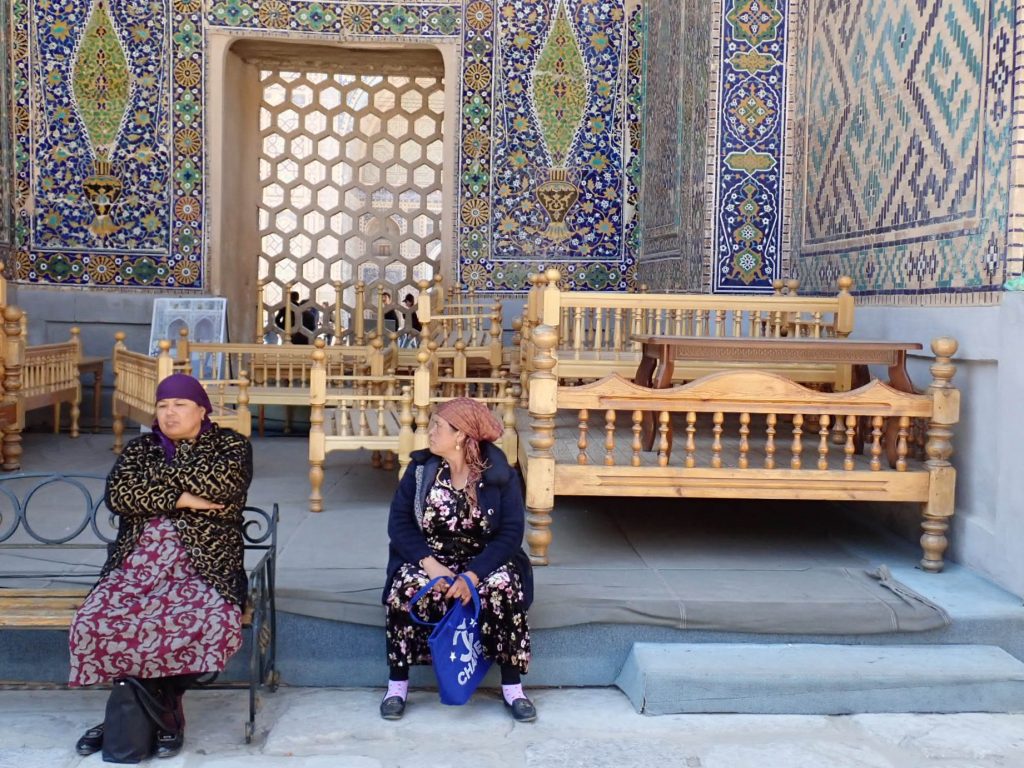
Writing a post about Central Asia is one of those nice problems to have: you’re never sure what to leave out. Mountains, deserts, Silk Road cities, shepherds in yurts, slave caravans, remote Post-Soviet republics with unspellable names; a sizeable essay could be filled with nothing but clichés about this place, and what’s more, they’d be true. It’s a treasure trove of adventure travel, an archetype of the exotic and the unknown. How strange then that it was also, for the first time in a very long time, a region I’d visited before.
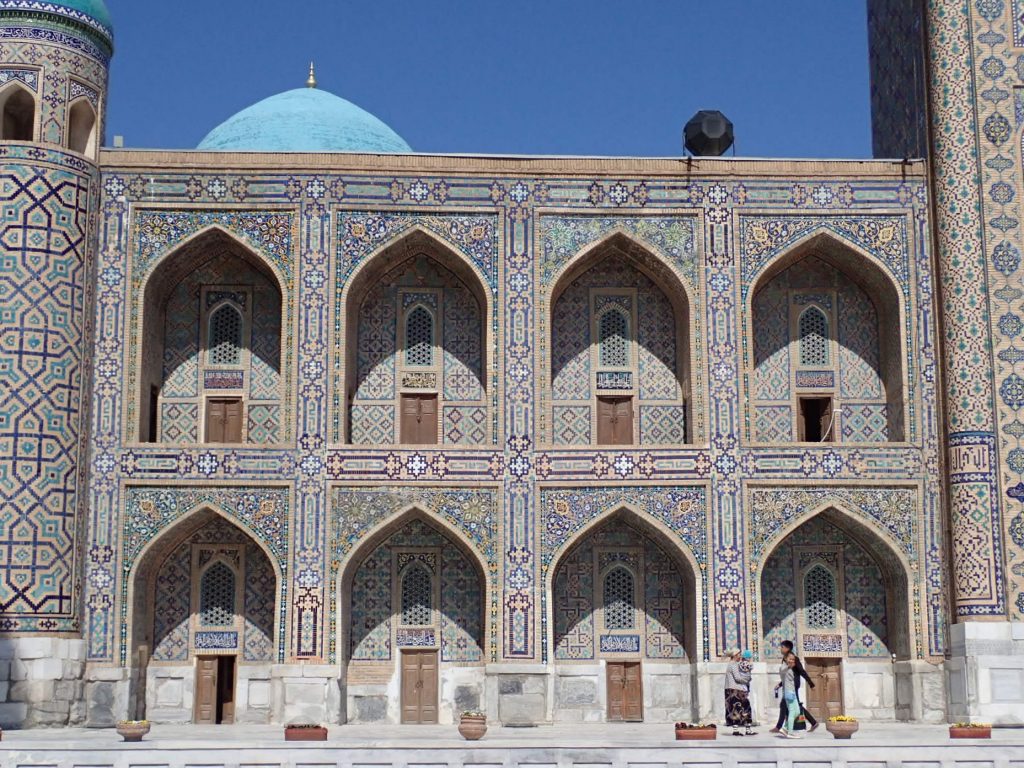
Back in 2017 I’d flown out here as a test-run for my upcoming world tour, and had mainly explored the mountains of Kyrgyzstan from a base of Tashkent. This time I’d be striking out across the desert, riding a route that had stared out at me since long before that time, in every working tea break where I’d sat and dreamed of future travels: the crossing from the world’s greatest mountains to the Caspian Sea. There was one difference though: my imagined journeys had always been outward, heading east to adventures new. Never had I thought the Silk Road would be my road home.
Fan Dance
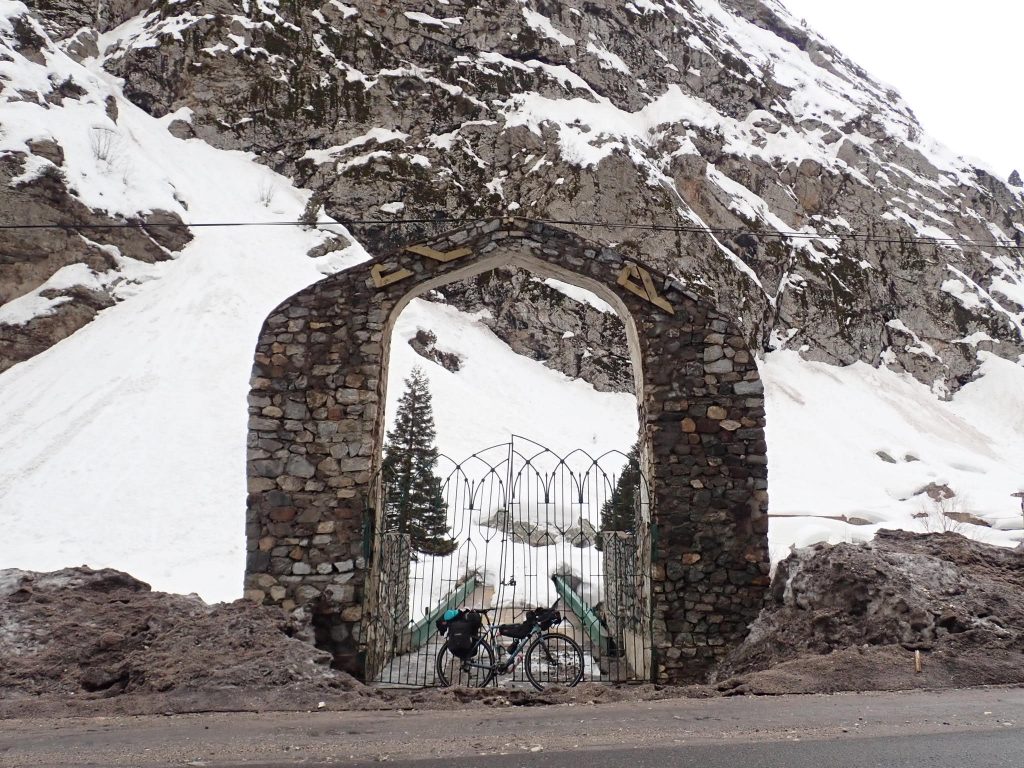
The Air Traffic Control team were on their break as I assembled my bike in Dushanbe, the capital of Tajikistan. Afghanistan was just over the border to the south; I’d chosen to fly over it rather than risk my life for route integrity or bragging points, calm in the knowledge that the Silk Road has always shifted, always taken whichever route has been politically feasible in any given century.
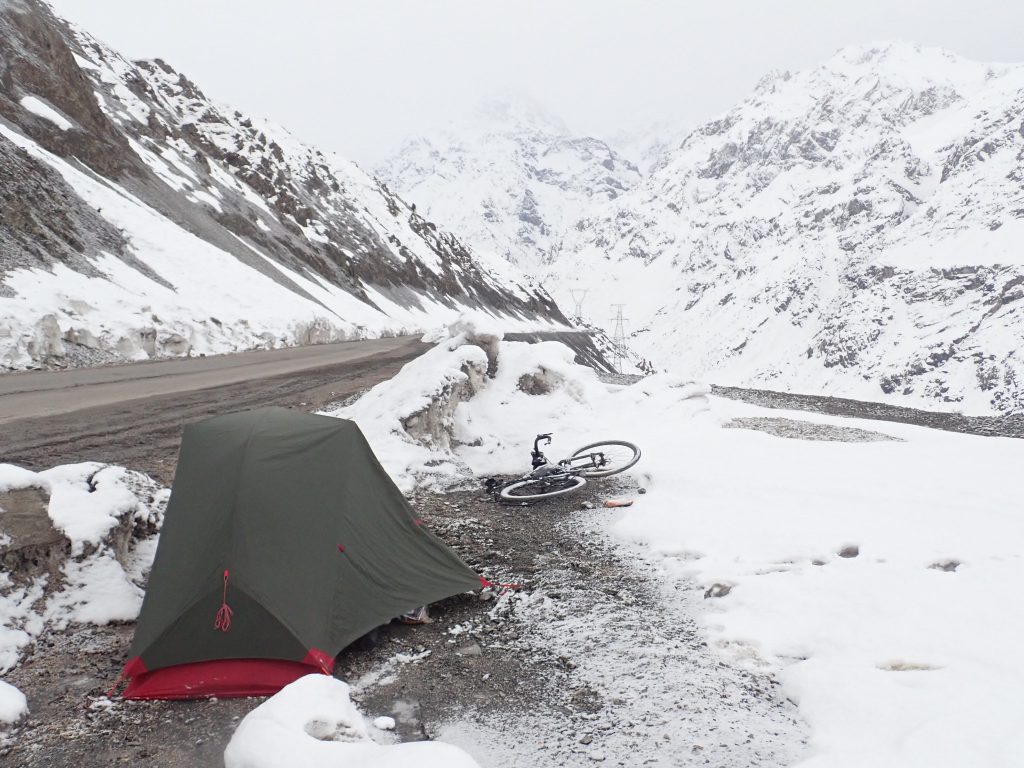
“Where you going, Panjakent? Panjakent very cold!” The controller gave an illustrative shiver. “Here, have my number. If you need help … “. I wasn’t sure whether to be reassured or frightened by this, but the wind through the buildings was certainly chill, and would certainly get a lot colder before I was over the Fan Mountains. These would be my first challenge; once I was over them I’d enter Uzbekistan at the Panjakent crossing, ride through the aforementioned Silk Road citadels of Samarkand, Bukhara and Khiva, then cross the Karalpak desert to the Kazakh frontier and the Caspian Sea. I wondered if I’d meet other cyclists out here: the season was a bit early, the mountains ahead were still snow-clad – but if you want to ride east from Europe you face two choices: this road or the one through Moscow. I knew which I’d prefer to take on a cold March morning.
The Tashkent Spring
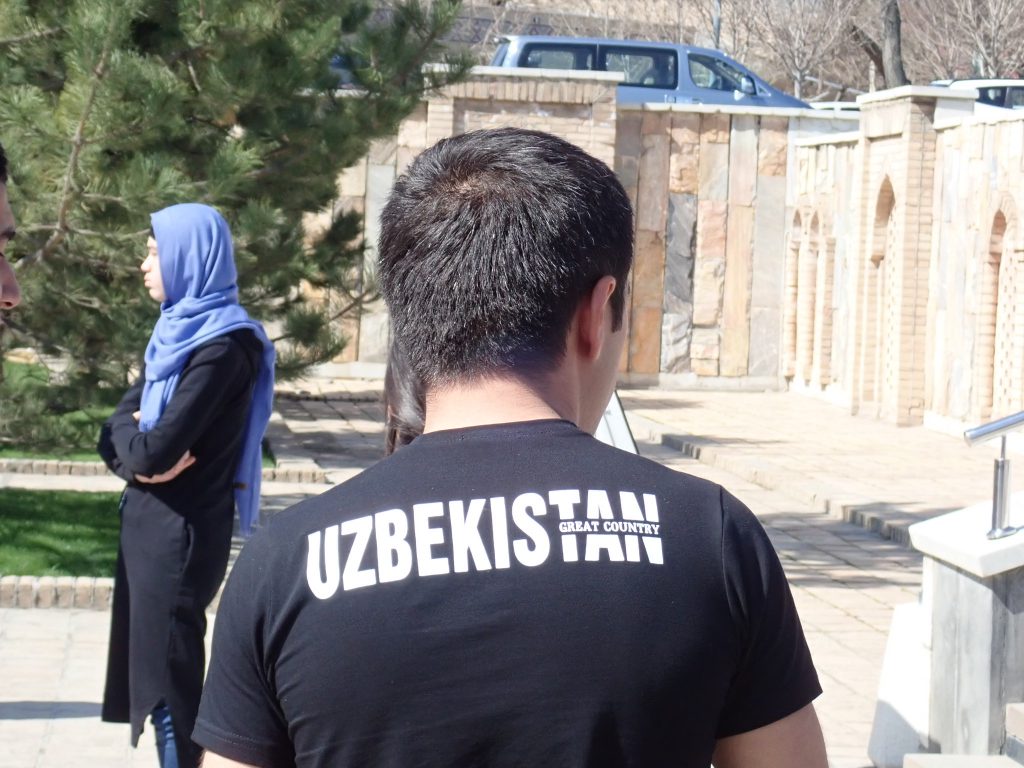
The mountains safely out of the way and all my fingers still attached despite the cold, my next obstacle – entering Uzbekistan – fell with an ease that belied the country’s recent past. After the fall of the Soviet Union Uzbekistan became one of the most closed countries in the world, until in 2016 the old president Islam Karimov died and the prime minister Shavkat Mirziyoyev gained power. When I’d visited the country in 2017 his reforms were just beginning; two years later the thaw was immediately visible. Where previously the visa process had been lengthy, now I entered visa-free. Where relations with Tajikistan had previously been frosty, I now crossed the formerly-closed Panjakent border with hardly a glance from the guards – much more easily than any of my border crossings last time. Where in 2017 I’d had to buy currency on the black market with hilarious results, I could now get it at full value out of ATMs. Mirziyoyev is still an autocrat – he is still not a democratic leader, and all the changes are top-down and could be reversed. That said, the ‘Tashkent Spring’ appears to be genuine, and seeing it in action was one of the truly heart-warming moments of my trip. I’d been through Trump’s America and Xi’s China, and flown around a Kashmir where bullets were flying; here at last was a country that was going in the right direction.
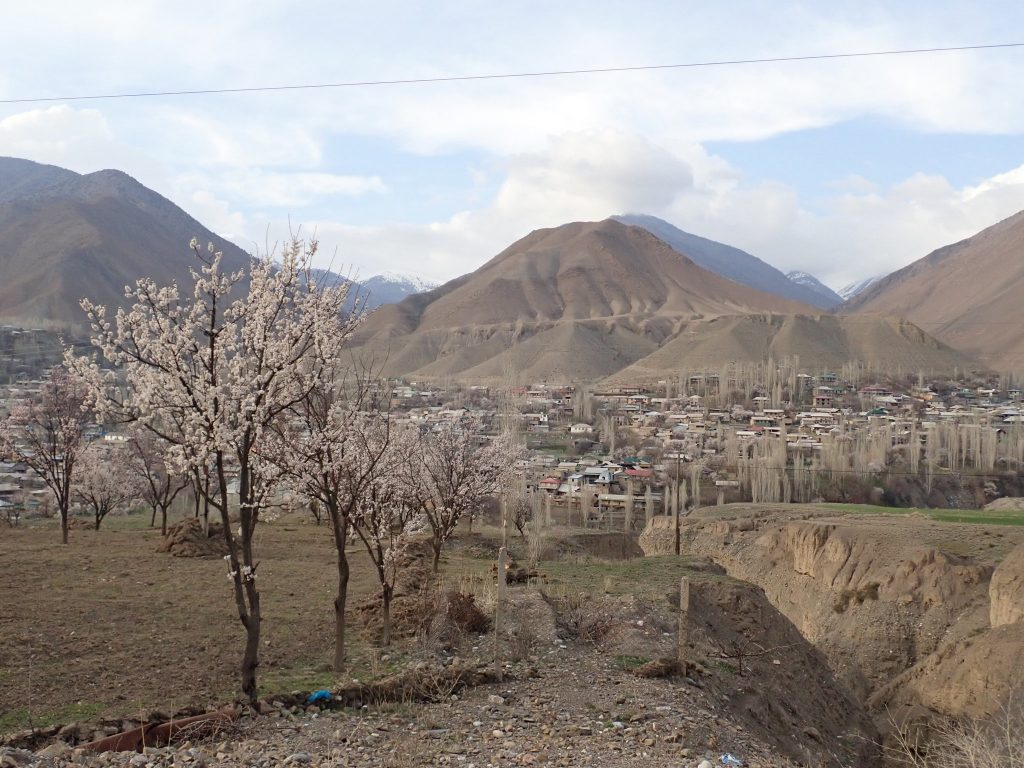
The Great Game
Each of the towns I now passed through formed part of the ancient Silk Road – the chain of overland trade routes that linked east and west in the days before 50,000 ton freighters and the Suez canal cut out the risk of sailing round Cape Horn. Grown rich on the passing trade, these desert citadels became seats of Islamic learning in the middle ages – Samarkand’s brilliant mosques and madrassas, restored by the Soviets, bore testament to this former wealth. Then in 19th Century, the the roads where my wheels now rolled had played host to the Great Game, that century’s very own Cold War. Britain had been perpetually terrified that the Russians would invade India: a Russian army, so the theory went in Whitehall, would sail down the Caspian Sea, cross the desert via the series of Silk Road trading posts that was Khiva, Bukhara, Samarkand and Kokand, then swarm over the passes of the Hindu Kush and descend to capture the jewel in Britain’s crown.
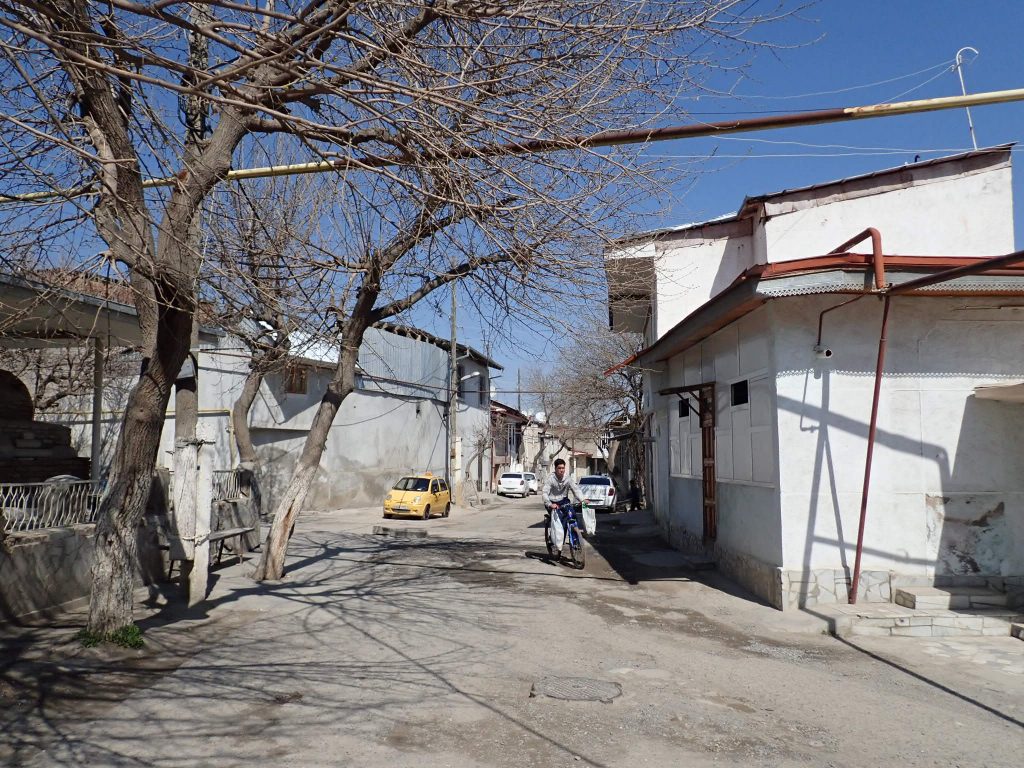
The Russians for their part captured the towns one after another throughout the century, promising glibly that each one would be their last, and it wasn’t until 1907 that both sides gave up and signed a peace treaty. Each had found out the hard way just how difficult such an invasion would be, and by that time both countries were mostly frightened of Germany and needed each other as allies.
While the Russians slowly but surely made inroads into the region, British agents were being sent out from Delhi to travel the route I now rode, making paeans to the khans and trying to spike the Russian attempts. One, a Lieutenant Shakespeare, persuaded the Khan of Khiva to release all his Russian slaves escorted then all the way to St Petersburg where he received effusive thanks in a personal reception with Tsar Nicholas – though secretly the latter was fuming as the British officer had just removed his pretext for invading Khiva – which had, of course, been Shakespeare’s plan all along!
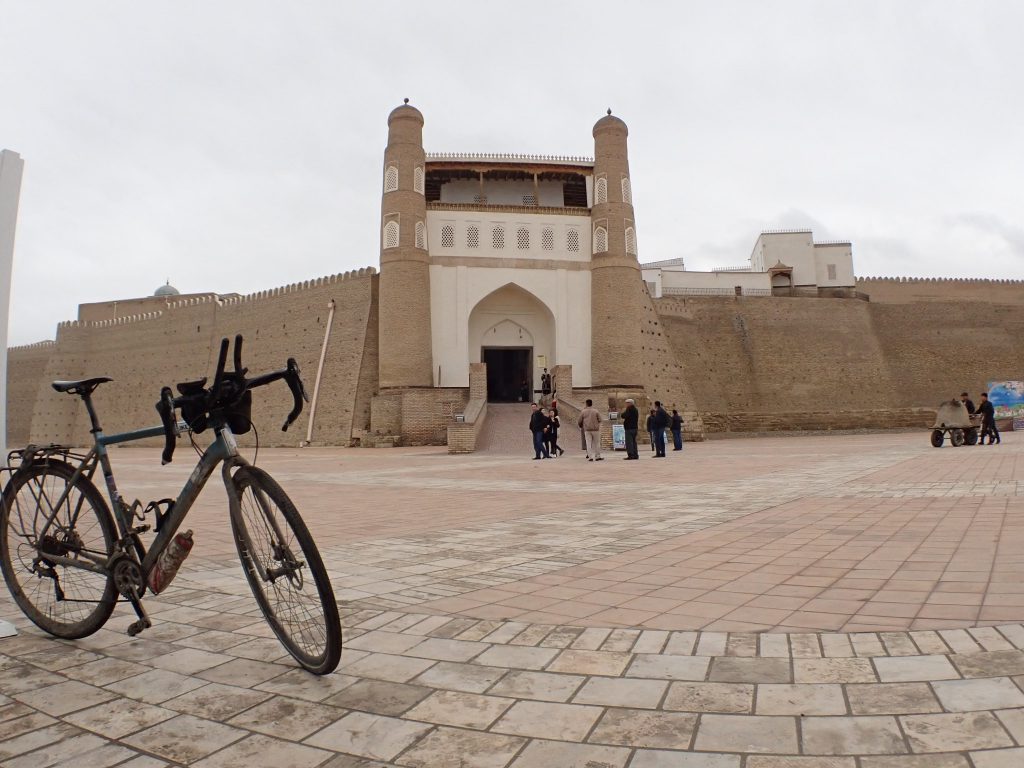
Not all were so successful though. After the splendour of Samarkand, my next stop was Bukhara and its infamous bug pit, which had incited the Victorian press into sensation when two British officers, Arthur Connolly and Charles Stoddart, had been imprisoned in this vermin-infested hole before being beheaded in the square outside. It was Connolly who had himself coined the term ‘Great Game’ – and it was here where I now stood that he lost it.
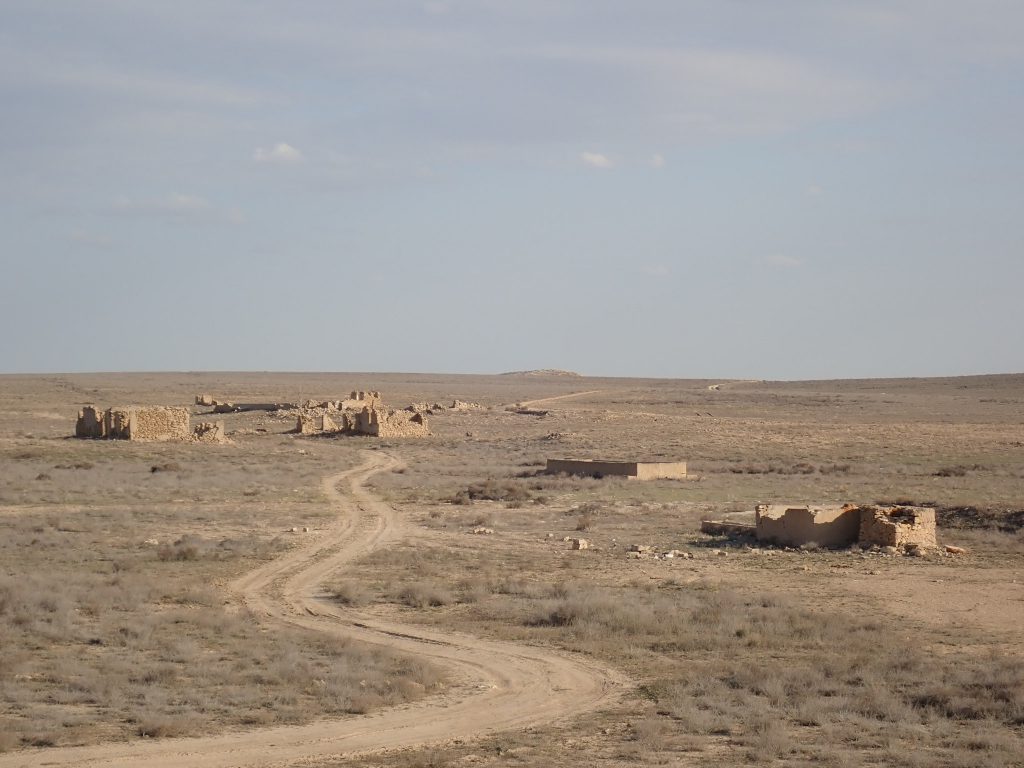
Desert Desolation
My final citadel – Khiva – was finally conquered by the Russians at the fourth attempt. Only one of the first three defeats had been at the hands of the Khivans though: another attack was tried in winter but turned back halfway with a fifth of the soldiers already dead of the cold, while yet another force was spared a similar suicide mission only when the tsar died before they had gone too far. This same route was where I would now ride – and winter was not long past.
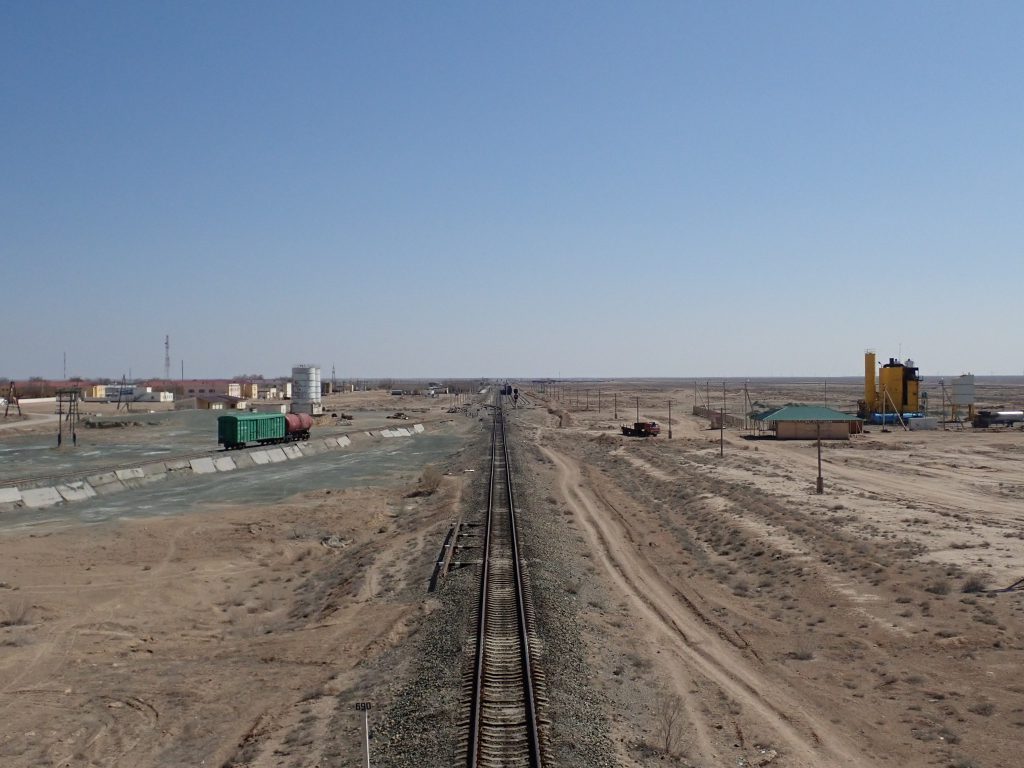
This was the most serious part of my Central Asian leg – itself the toughest stretch I’d ridden since Alaska or Nevada, with 2000 kilometres of bad roads and no bike shops between Delhi and Baku. I’d taken my equipment a level up for this stretch, with bigger tyres, extra spares and a multifuel stove, and hoped nothing would go seriously wrong. Now it would be tested: after Khiva there was the brutalist Soviet city of Nukus at 100 miles, then no sizeable settlements for 300 miles until the turn of Beyneu, over the Kazakh frontier.
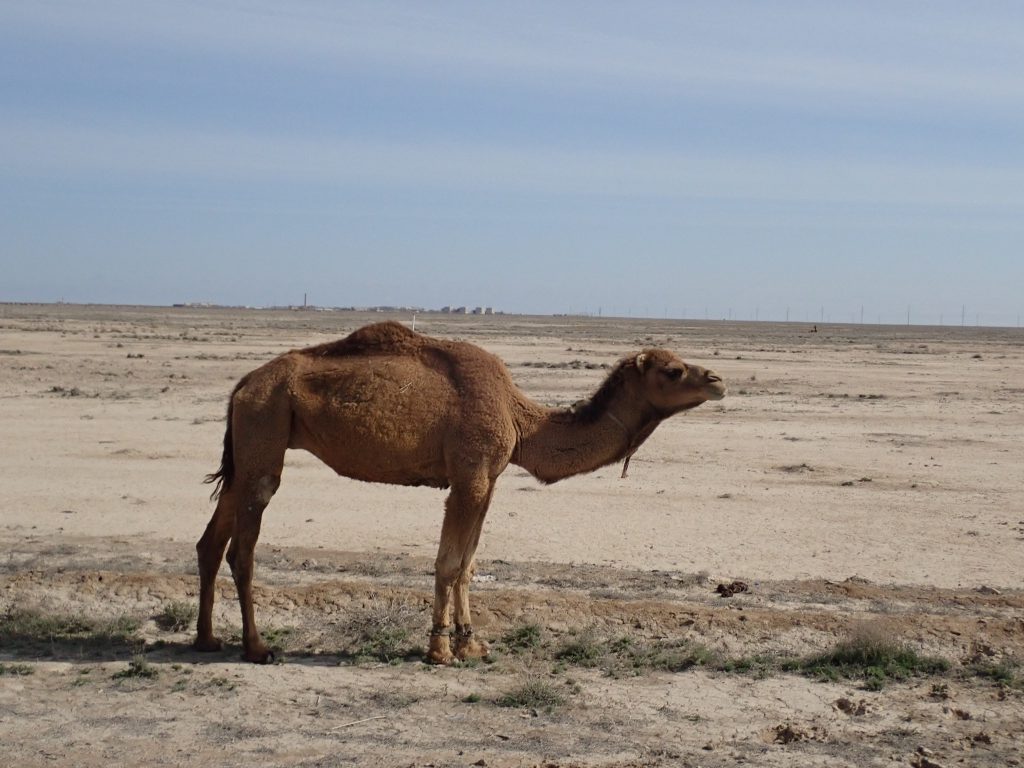
This was Karalpakstan, an autonomous republic and the poorest region of Uzbekistan; it had once been more fertile and prosperous but had been hit hard when the Aral Sea was drained to supply far-off Soviet cotton crops. I found it hard to imagine this land ever having been green or scenic though as I inched my way across the open flatness, totally at the mercy of the wind. One day I’d crawl to a paltry 70 kilometres, the next I’d do 200 without really trying.
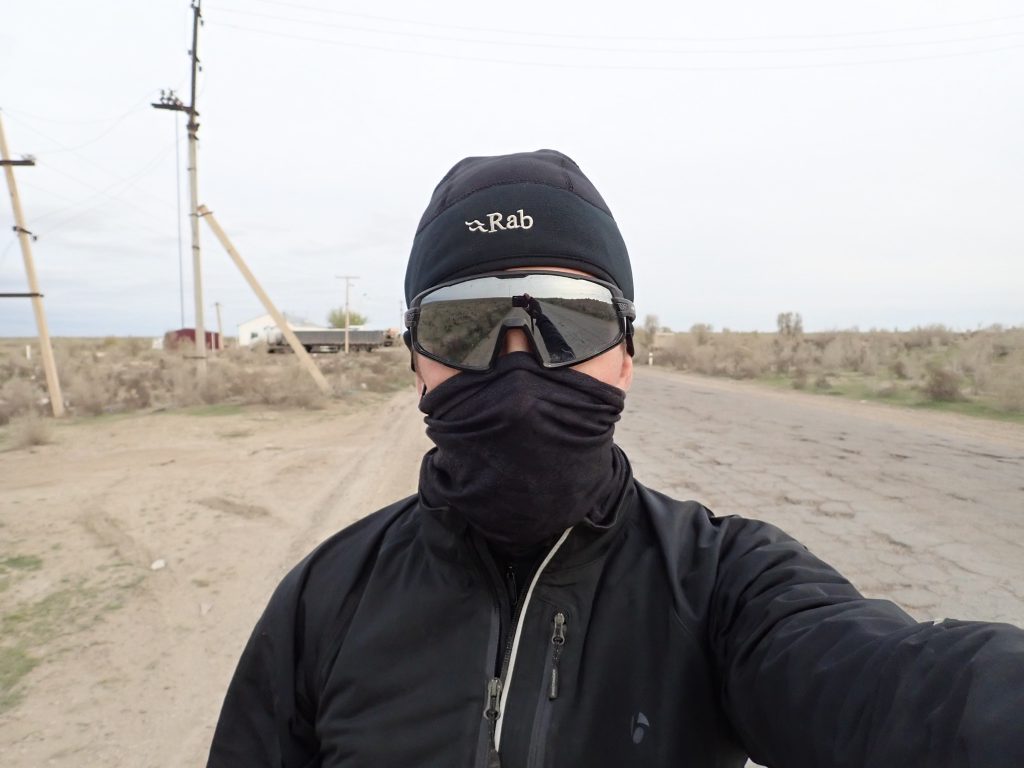
There was only so much that the wind could help when the road got bad though. The surface switched in seemingly random sequence between good, bad and barely there at all, until sometimes all trace of any former tarmac disappeared and a track of unsealed earth and gravel was all that remained. A truck stop would exist every sixty to a hundred miles along this stretch, offering dumplings, Snickers bars, water, beer and sometimes even WiFi or a bed. In between them I played a game: periodically peering down at my rear wheel to inspect how it was standing up to the road, how much more buckled it had become, and whether I judged it would make it to Kazakhstan and good tarmac without failing completely. (Reader, it did.)
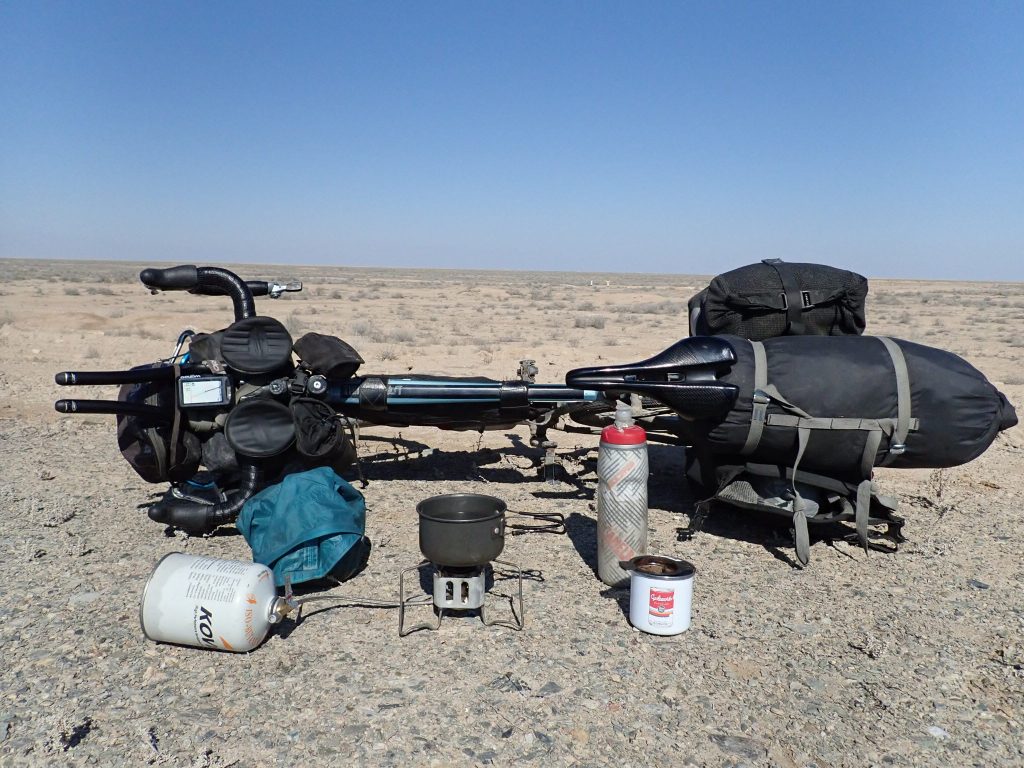
I finally reached the border and was ushered through the waiting crowds by guards more excited to see me than might seem reasonable, unless you worked a hundred miles of featureless desert from anywhere and you only ever saw Kazakh and Uzbek truck drivers. A queue of their trailers stretched three quarters of a mile back on the other side; I pitied them as I whizzed past on the suddenly perfect road. There were still three hundred miles to the coast but nothing was as serious as before; the surfaces were better, the stops more frequent. In a few short days I was at the coast, eating steak frites in a restaurant overlooking the world’s largest lake, ready to fly out to the Caucasus and the start of Europe.
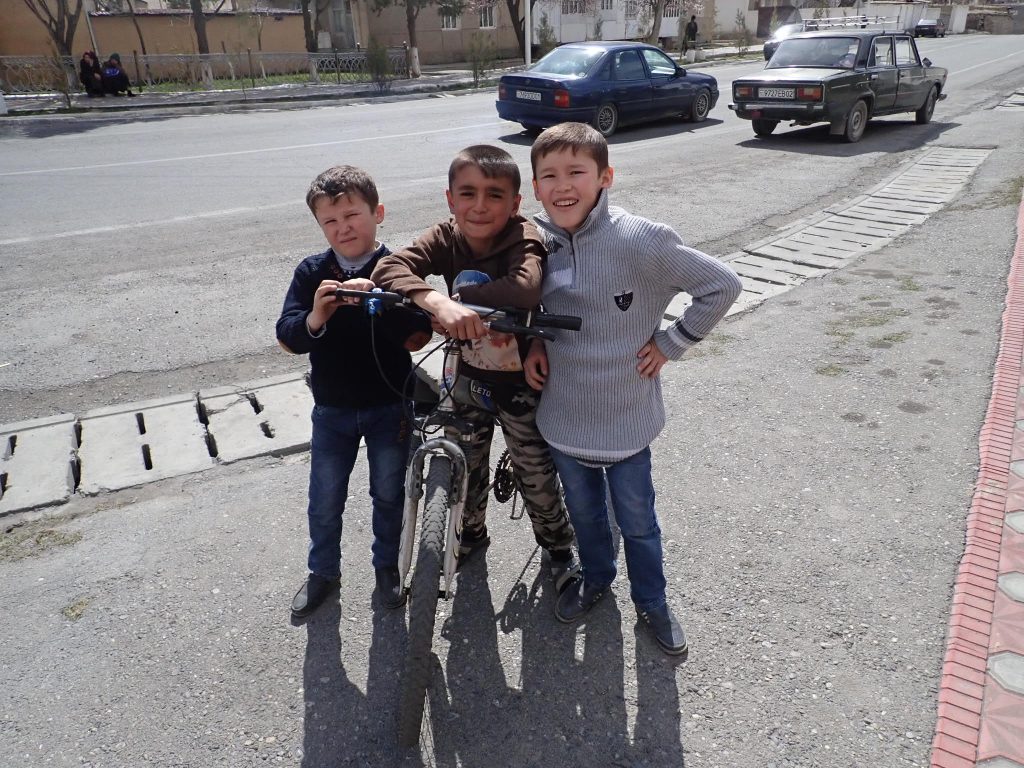
The End of the Middle
Peace might have broken out in Central Asia in 1907 but the treaty would last a mere ten years until the Russian Revolution tore it to shreds. Thirty years later, after an interlude of fighting the Germans, Britain may have lost its Indian empire but the replacement power of America lost no time in restarting the frigid hostilities. Within the last half century, both of the Cold War powers have have fought wars in Afghanistan and have discovered the lessons the British learned in the First Afghan War of 1842, when a single British soldier escaped Kabul with his life. Be it 1842, 1979 or 2011, the pattern repeats itself – you could say the Great Game has never stopped, only the terms have changed.
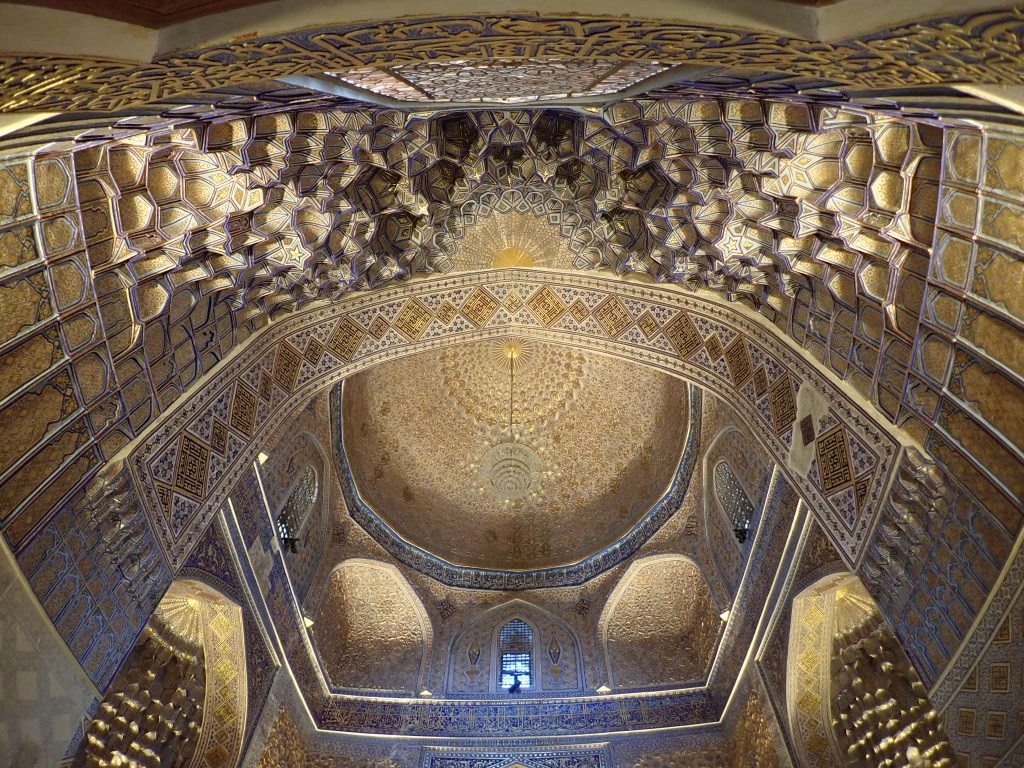
For all the government terror warnings, this region is a major draw for adventure travellers – and for good reason. The post-Soviet Stans, having spent some years with their borders relatively closed, are now after tourist money so entry could hardly be easier. You’d be wise not to venture too close to the border with the main part of Afghanistan, but a trip here shouldn’t be anything except peaceful, and full of amazing experiences
“Every mile is twice as hard here”. It was a mantra I’d taught myself in 2017 and forgotten in the intervening two years. Whether it was the heat, the cold, the mountains, the altitude or the paucity of resupply points, there’s no such thing as an easy mile in this part of the world – I was reminded of this with a bump on my very first day. Was I glad I’d come back to the region though, for all its difficulty?
You bet I was.
